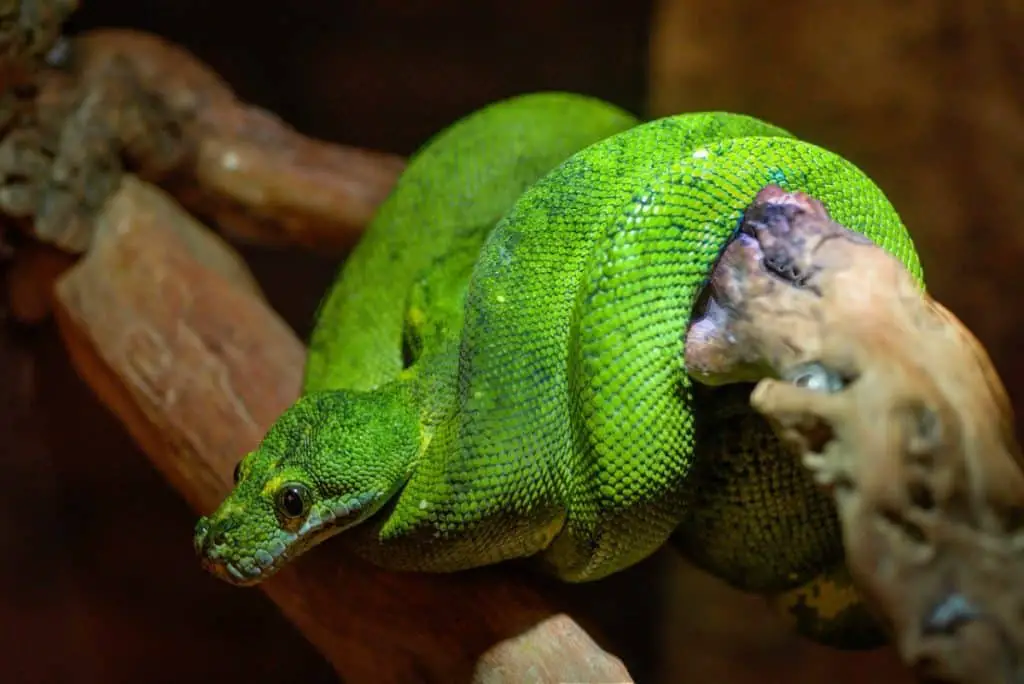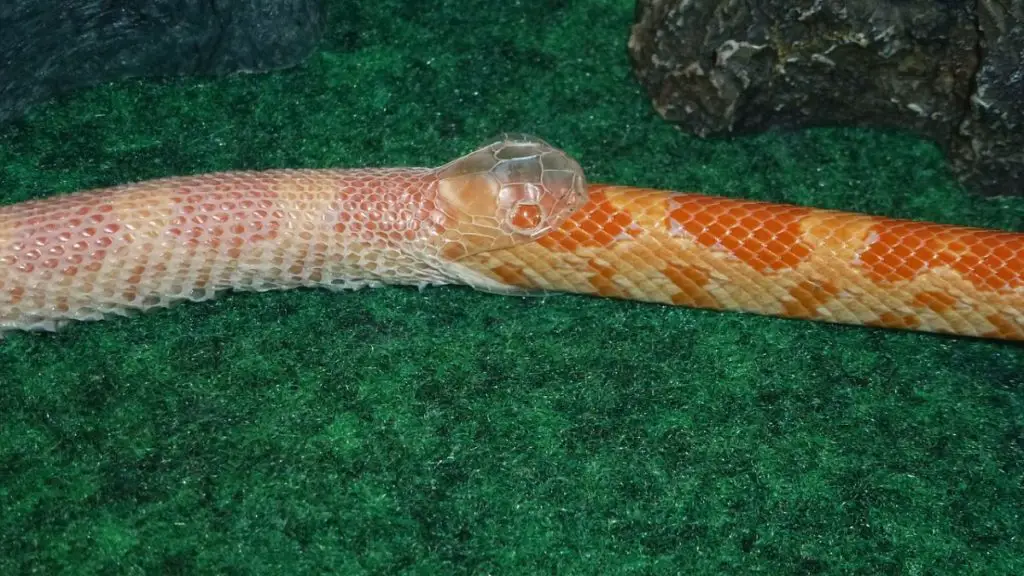There are more than three thousand species of snakes across the globe, with at least one native to each continent except Antarctica. Snakes come in many different sizes, with the smallest, the thread snake growing up to 10cm long. On the flip side, the reticulated python can be as large as 9 meters in length. Let’s look at some exciting facts about snake growth and adaptability.
Snakes are classed as indeterminate growers. Snakes will continue to grow even after reaching maturity before slowing down to reproduce. Once reproduction occurs, they will continue to grow, albeit slower.
If you want to find out more, including why snakes shed their skin, please read on.
Do you know where snakes live? Find out here

How quickly do snakes grow?
Reptiles, particularly turtles, are known for their long lives. Many snakes also have long lives and can grow extremely large. In general, the larger the species of snakes, like pythons or boas, the longer their lifespan.
Even though the growth patterns are not adequately documented for a large species of reptiles, they mostly follow a pattern of asymptotic and determinate growth as they mature over time.
Most snakes and reptiles are marked by rapid growth during the initial years of their life, which gradually slows down as they reach adulthood. After that, their energy resources are shifted to the processes of reproduction. As they mature, growth is prolonged and, in some cases, even non-existent.
However, when the food resources are pretty high, snakes can grow rapidly.
The greatest factor affecting the growth rate of snakes is their hunting habits and the availability of food. They are equipped with forked tongues, and they flick them in various directions to sniff their surroundings. This helps them to discern whether there is a presence of threat or food.
Snakes also have other ways of detecting prey and predators. They have openings or pit holes before their eyes that allow them to sense the heat emitted by other warm-blooded animals. Moreover, the presence of some bones in the lower jaws can help sense vibrations from scurrying animals like rats and moles.
It’s also incredible that when snakes capture their snack, they can eat animals that are larger than the size of their head. This is possible because snakes have their lower jaw unhinged from the upper ones.
As a result, once the prey is captured within the snake’s mouth, it is held securely while they gradually swallow it whole. Snakes have a very slow metabolism, and they may take up to a few days to digest their meal. When they have a good supply of prey, their growth process continues without any interference.
Non-venomous snakes swallow their prey whole or constrict them until they die. Whether a snake kills its prey by striking with venom or squeezing, most of them eat their food whole. The amount of food they eat allows them to grow rapidly.
Do you know how snakes defend themselves? Find out here

Why do snakes shed their skin?
A regular and recurrent phenomenon during the prime period of snakes is the shedding of their outer skin. Unlike most animals, a snake’s skin or outer covering doesn’t grow with them.
A snake’s growth process is characterised by shedding and producing new skin. This process also helps them keep healthy. Depending on the species, a snake may shed its skin multiple times, though it’s common to shed a few times over a year. Young snakes, along with faster-growing species, tend to shed faster than others.
While dormant snakes do not moult, this is often the first occurrence after their dormancy period comes to an end. The integument or the tough protective outer skin layer of snakes serves as a buffer between the animal and the surrounding environment. It is constantly subjected to wear and tear along with other damage.
If you want to know how snakes eat their prey, I have written an article here.
Do snakes grow all their life?
Snakes, lizards, corals, and amphibians continue growing until death. These creatures are scientifically termed indeterminate growers. Indeterminate growth refers to a condition where a living creature continues with physical development even after reaching adulthood. Besides snakes, fishes, and amphibians, this phenomenon is also common with plants.
When snakes are in a favourable environment with adequate food and nourishment, they will continue to grow in length even after hitting sexual maturity. Snakes tend to encounter diseases and predators that can shorten their lifespan when in the wild.
The longer the lifespan of a snake, the more predators it has to encounter. It is worth noting that while a snake may not stop growing, some external factors allow only a small percentage of huge snakes.
Two highly invasive species of snakes, the non-native boa and African rock pythons, have successfully established their breeding zones outside their native countries.
The US Geological Survey has found boa constrictors in Puerto Rico and rock pythons in Florida. These non-native snakes deserve special mention because they tend to grow very fast during the first few years after hatching and tend to slow down over time with the decreasing food supply. Changes in climatic conditions also play a massive role in the size of a snake.
For most species of snakes, there are no visible signs of ageing. Only a trained expert dealing with snakes for a very long time would be able to decipher a snake’s age.
Snakes are highly mobile animals, and they can move over sand, rocks, and soil with equal dexterity. They come in a broad range of colours and patterns, mostly reflecting the physical surroundings with a brilliant shine and flecks.
Snakes can inhabit a broad range of geographical environments, from rainforests to freshwater streams to backyards. The more we know about snakes, the more we understand how fascinating creatures they are and need to be protected and respected as our fellow beings.
Do you know how many families of snakes exist? Find out here

